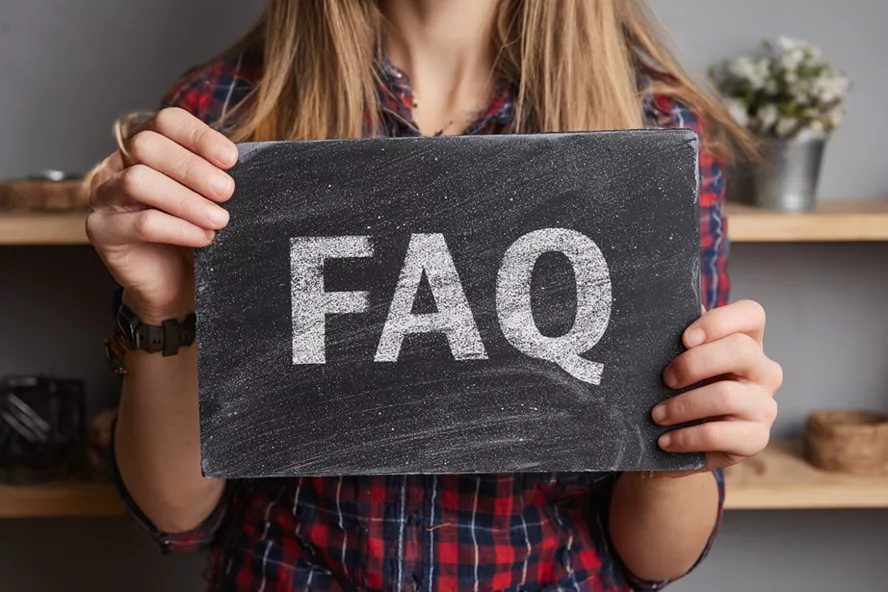Let’s be honest, silent auctions can be a lot to manage. Between tracking bids, keeping people engaged, and making sure everything runs smoothly, there’s a lot happening behind the scenes. And depending on how you run it, your setup can either make things easier… or way more stressful.
That’s why more organizers are taking a second look at how they run things—especially when it comes to bid sheets. Some are sticking with paper. Others are going digital. So what’s the better option?
In this post, we’ll look at how silent auction bid sheets stack up against bidding apps, and why one might work better for your event than the other.
What Are Silent Auction Bid Sheets?
Ask anyone who’s run a silent auction, and they’ve probably dealt with stacks of bid sheets. For years, they’ve been the go-to method: print out sheets for each item, leave some pens on the table, and let people write down their bids.
It’s simple—and for a lot of small events, it still works. A typical bid sheet includes the item name, a short description, starting bid, and space for guests to add their names and bid amounts. At the end of the night, whoever has the highest bid wins.
But anyone who’s actually sorted through those sheets knows it’s not always smooth sailing. Handwriting can be hard to read. People get outbid without realizing. And tallying everything manually? That’s a lot of work—especially if you’re running on volunteer power.
These days, bidding apps are starting to replace the pen and paper approach. Not because bid sheets are “bad,” but because there’s a better way to manage it—especially when time, accuracy, and guest engagement matter more than ever before.
The Role of Bid Sheets in Traditional Auctions
For some in-person silent auctions, paper bid sheets are still the norm because there is little, to no tech required. Usually, each bid sheet lists the item name, a quick description, a starting bid, and how much each new bid needs to increase by. Some fundraisers also include a “Buy Now” option if you want to let guests skip the back-and-forth and lock an item in on the spot.
Silent auction bid sheets may appeal to fundraisers because they’re relatively easy and don’t have a steep learning curve. But in terms of administration, they do require a lot of prep—printing your materials, setting up the tables, and sorting through the bid sheets at the end.
So, is a traditional silent auction right for you?
Key Considerations When Using Paper Bid Sheets
If you’re sticking with paper bid sheets for your silent auction, there are a few things you’ll want to think about beforehand. Frequent fundraisers know that a little prep can save you a lot of headaches later on:
- How Many Bid Sheets to Print: You’ll probably need more than one sheet for each item. If it’s a smaller event, one sheet might be fine. But if you’ve got a crowd, you’ll want extras on hand, especially for the more popular items.
- Pens vs. Pencils: Here’s a big one—go with pens, not pencils. It might sound tempting to use pencils because you can erase mistakes, but that can cause confusion. Pens are permanent, which means no room for error. The highest bid will be clear, and that’s exactly what you want.
- Space for Bidders: Don’t cram too much info onto a single bid sheet. You want plenty of space for people to write their name, bid, and maybe even a phone number just in case they’re not around when the auction closes. The last thing you want is for people not to have enough room to clearly write down their information.
With these considerations, you will save you a ton of stress come auction day.

The Limitations of Using Paper Bid Sheets
Paper bid sheets might feel like the “safe” choice—especially if they’ve worked fine in the past. But if you’ve ever run an event where half the pens dried out or you had to sort through crumpled sheets and messy handwriting at the end of the night, you know they’re not always ideal.
Below are 3 key limitations with using bid sheets for a silent auction:
1. Time-Consuming Setup and Manual Data Entry
Anyone who’s prepped for an in-person silent auction knows how much time paper bid sheets take. You’re printing pages, labeling them, placing them on tables, double-checking each one… and that’s just before the event starts.
After the auction wraps up, someone has to go through every sheet, check for the highest bids, match them to guest info (which, let’s be honest, isn’t always legible), and then input everything manually into a spreadsheet or donor database. It’s a ton of work, especially if you’re relying on volunteers.
By comparison, online silent auctions take care of a lot of that heavy lifting. Bids are tracked automatically. No need to sort papers or squint at someone’s handwriting to figure out if they meant $35 or $85. You get cleaner data, faster results, and a lot less post-event stress.
2. Issues with Handwriting, Errors, and Missing Bids
It’s amazing how often something as small as bad handwriting can cause big problems at a silent auction. With paper bid sheets, you’re relying on every guest to clearly write their name, bid amount, and sometimes even contact details. But that doesn’t always happen.
You might end up with bids you can’t read, missing digits, or two people writing the same amount—leaving your team to play detective at the end of the night. And if someone accidentally skips a row or writes in the wrong spot, it throws everything off.
3. Missed Engagement Opportunities
With silent auction bid sheets, your event is limited to whoever is physically in the room. That might work fine for a small gathering, but it puts a hard cap on how many people can participate—and how often they check back in.
Unless your guests are hovering near the tables, it’s easy for them to miss when they’ve been outbid. And if someone leaves early or gets caught up in conversation, that’s it—they’re done bidding. There’s no easy way to re-engage them once they’ve walked away from the bid sheet.
Bidding apps change that completely because guests can bid from their personal devices, meaning they don’t have to stay glued to the auction table. They’ll get instant updates if they’re outbid, and they can place a new bid without missing a beat. That freedom to check in anytime—whether they’re grabbing a drink, at home, or even in a different city—keeps people involved longer and can drive up your final totals.
For fundraisers who want to boost participation without adding pressure, going digital opens up a lot more room to connect with donors.

The Rise of Digital Silent Auctions
Silent auctions can be a lot to juggle. Between keeping track of bids, making sure people stay interested, and handling all the behind-the-scenes details, it’s easy for things to get overwhelming. How you set up your auction can either smooth things out or add extra headaches.
How Mobile Bidding Works
Instead of hovering around a table or jotting your name down, mobile bidding lets people join the silent auction from wherever they are—on their phone, tablet, or computer.
It’s pretty straightforward. At the event, guests either scan a QR code or get a link to join the auction. Once they’re in, they can:
- Easily browse all available items
- Favorite items of interest
- Place bids at their fingertips or have the system place bids on their behalf
- Receive auction updates and outbid notifications instantly
This digital approach keeps the auction moving without all the paper, pens, and back-and-forth. And for guests, it feels a lot more like online shopping than a fundraiser which can result in raising more overall for your cause.
Benefits of Online Bidding for Organizers and Donors
Going digital with your silent auction isn’t just about going paperless—it can seriously improve how smoothly things run.
For organizers, it takes a load off your plate.
Instead of managing bid sheets, everything is taken care of in one place. You’ll know which items are getting the most attention in real time, and you won’t have to manually enter a single bid afterward.
Guests like it, too.
They can check out items and place bids from their phones—no need to hover by the table. If someone outbids them, they’ll get a quick alert so they can jump back in. It keeps everyone more involved without making them do extra work.
Here’s what that looks like:
- You get cleaner data and fewer errors.
- Your team isn’t stuck doing manual entry.
- Bidders stay active longer because of real-time updates.
When both sides have a better experience, your auction ends up raising more. It’s that simple.
Common Myths About Going Digital (Debunked)
Some people hear “online silent auction” and immediately think: too expensive, too complicated, or too techy for their crowd. That used to be true a while back, but these days? Not so much.
“It’s too expensive.”
Actually, many online silent auction platforms offer flexible pricing. Some even charge a small percentage of the total raised, so you don’t pay upfront and out of pocket. And when you factor in the cost of printing bid sheets, tracking winners, and fixing mistakes? The digital route starts to look a lot more budget-friendly.
“It’s complicated to set up.”
It’s easier than you think. Most tools walk you through step-by-step, and once your items are entered, the rest runs itself. No coding, no tech background needed.
“Our guests won’t know how to use it.”
If your crowd knows how to text or use a smartphone, they can handle a bidding app. Many platforms are super intuitive, and some even offer quick-start guides for guests.
So if these concerns are keeping you tied to silent auction bid sheets, it might be time to rethink. The tools have come a long way—and they’re built to make your job easier, not harder.

Digital vs. Paper: Which Silent Auction Format Is Right for You?
Picking between silent auction bid sheets and a digital bidding app really depends on your event and what you want to get out of it. While the traditional method may be the more familiar approach to some, digital silent auctions address many shortcomings of its predecessor.
Setup and Workload
Paper bid sheets are cheap and straightforward. You print them out, set them up, and at the end, someone has to go through each to figure out the winners. It’s simple but can be a lot of work behind the scenes.
There’s some initial set up required for digital silent auction, but once your items are in, the app handles the rest. From bidding to communicating with winners automatically. This results in less paper and manual work for volunteers.
Experience for Your Guests
With bid sheets, people have to visit each item’s table and write down their bids. Then, they have to remember to come back and check if they’ve been outbid which can get challenging if your event is busy.
Bidding apps let people bid from their phones and send alerts if they’re outbid, so folks can stay in the game without constantly walking around or hovering over tables. There’s a reason why 63% of donors prefer to give online in 2025.
Getting Results
Once a traditional silent auction ends, volunteers need to sort through the bid sheets and make sure everything’s accurate. This process can be error prone, especially if your guests fail to enter in legible or accurate information.
Digital silent auctions take that once error-prone process and simplify it automatically. You get neat, ready-to-go reports that make closing the event a breeze, simplifying the closeout process for volunteers and guests alike.

FAQs About Silent Auction Bid Sheets and Going Digital
Is switching from bid sheets to an app difficult?
Not at all. Most bidding apps are designed to be user-friendly, even for first-timers. Instead of printing and sorting papers, everything runs through the app—saving time and cutting down on manual work.
What are the benefits of online bidding over paper?
With online bidding, folks can bid anytime and anywhere without fussing over physical bid sheets. No messy handwriting, less administrative strain, and the auction updates instantly. It just makes the whole event easier to run.
How do I get started with a mobile bidding app?
First, you’ll need to settle on a platform that fits your needs. Once you sign up, you can begin to upload your auction items. When you’re happy with the look and feel of your auction, send invites to your guests. A platform like Bid Beacon has support resources available to get started.
Looking For A Free Printable Silent Auction Bid Sheet?
For organizations still looking to run traditional silent auctions, download Bid Beacon’s bid sheet template for free! If you want tips on how to use it effectively, check out our full guide on silent auction bid sheets.